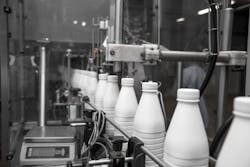The ability to manage a product from inception to production to aftermarket service, has long been an area of interest for the discrete markets where complex products like automobiles are engineered, assembled and serviced. But recently, there’s been more movement to bring product lifecycle management (PLM) to the batch industries of food, beverage and pharmaceuticals.
Selerant, for example, has formula-based PLM software that serves as a design tool for recipes, connecting the processes to optimize time-to-market. Neo PLM, another process PLM application, provides a digital design approach to managing the complexity of the drug development process for the pharmaceutical industry.
Now, Siemens PLM Software, too, is taking its Teamcenter software beyond the typical discrete applications and into process PLM. From managing food safety regulations to managing quality-by-design and even package design, Teamcenter can help food and beverage manufactures who have adopted a digital approach to product development and manufacturing.
And food companies are going digital—because they have to, due to new consumer demands and regulatory mandates.
The latest food manufacturer to adopt Seimens’ Teamcenter to optimize product development is Binggrae, a food manufacturer in Korea. Due to the rapidly changing tastes and preferences of its consumers, Binggrae needed to develop a new infrastructure to manage product data systematically throughout the development cycle. Working with Siemens’ Teamcenter, Binggrae plans to capitalize on diverse product ideas and manage products in a more optimized way by managing the whole process end-to-end from production to product launch.
Teamcenter can help enhance productivity by improving Binggrae’s formulation process and managing the creation of its packaging designs and artwork. The company also anticipates that the software’s collaborative infrastructure, built for cross functional teams, will improve the success rate when introducing new products.
“We expect Siemens’ software to help us optimize our product development processes and lay the foundation for quicker development to manufacture highly competitive products by establishing a cooperative system,” said Mr. DongKi Ha, head of the Information Innovation team at Binggrae. “With the adoption of Teamcenter we could establish an advanced data management system that integrates marketing and research and development.”

